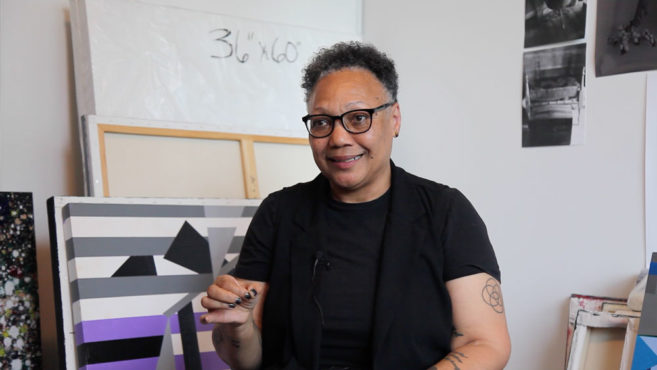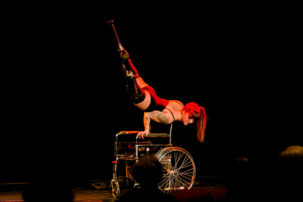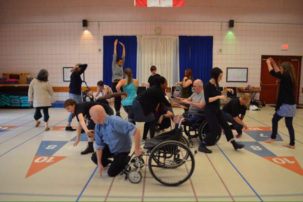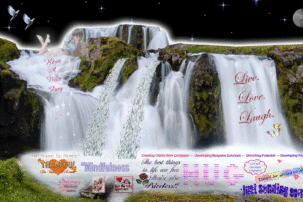Having forgotten to bring an umbrella, I hurried into the 401 Richmond building out of the dampness of the unseasonably rainy evening. My friends had invited me to the opening reception of a new exhibition at Tangled Art + Disability—“HIDDEN.” Excited, I made my way through the halls to the gallery. I was told that the exhibition, curated by artist and activist Gloria C. Swain, featured the work of Black disabled artists. Being a Black disabled artist myself, I had never attended, nor participated in, an event where every artist was both Black and disabled. I had no image in my mind, no muscle memory in my body, nothing from which I could draw a comparison to the forthcoming experience.
As I approached the gallery, the first thing I saw were Black people signing to each other in the hallway, deep in an engaging conversation. Entering the display I immediately felt welcomed by the relatively low, warm lighting. For many of us with sensory processing sensitivity, bright lights reflecting off the usual white walls of an art gallery can be a deterrent to attending gallery events. Directly in front of me, on a freestanding wall in the middle of the space, was a large projection showing Tamyka Bullen, a brilliant Deaf performer and artist, telling a story in ASL. To my right was a small collection of altars by Kyisha Williams, with delicate tablecloths, foods, plants and libations. Next to these altars Bullen appeared again, this time on a smaller screen, signing a poem about the inherent magic of queer people and disabled/ill people. The mindful nature of Bullen’s storytelling drew me in to the stories on both screens, and I found myself moving away only after small crowds formed around each.
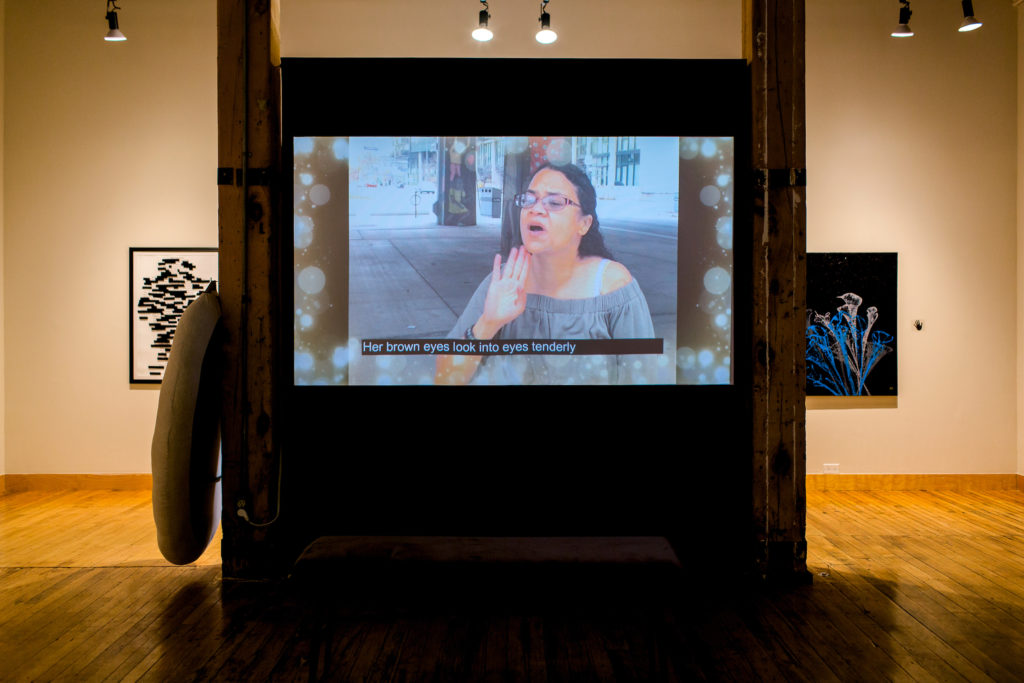
Tamyka Bullen, You’re Beautiful, Mami Wata, Fly Higher, Red Lipstick. ASL poetry. Photo: Michelle Peek Photography. Courtesy Bodies in Translation: Activist Art, Technology & Access to Life, Re•Vision: The Centre for Art & Social Justice at the University of Guelph.

“HIDDEN” installation view. At right: Peter Owusu-Ansah, Stripe 1, Yellow Ring, Blackground. Digital prints. Photo: Michelle Peek Photography. Courtesy Bodies in Translation: Activist Art, Technology & Access to Life, Re•Vision: The Centre for Art & Social Justice at the University of Guelph.
On the wall opposite the altars was a captivating trio of brightly coloured works on large square panels. One piece guided the viewer’s eye from its golden yellow outer ring through shades of oranges, pinks, purples and blues, finally landing in the light turquoise serenity of a small square in the centre. These pieces were made by Peter Owusu-Ansah, a Deaf visual artist whose biography explains that “seeing is how he captures the joys of life.” His work communicates this joy.
As I rounded the other side of the freestanding wall, I met a simple, yet deeply affecting, installation that brought tears to my eyes. A white plastic stool stood alone in front of the text-covered wall. Large letters read “HOLDING SPACE” at the top. I began to read the prose by Gloria C. Swain, which cascaded down the wall. I was overcome with such deep, tender emotions that had never before been evoked for me in an exhibition space. The text explained that the empty seat served a dual purpose: to welcome the spirits of disabled artists who have passed on due to injustices, and to remind us to make space for living disabled artists who could not be present due to their disabilities.
For me, a Black disabled queer artist, Gloria C. Swain’s “HIDDEN” was one of the first times I truly felt my whole self being welcomed and considered in someone else’s exhibition. I did not have to choose to celebrate my Blackness, my disabilities or my queerness; I could bring all of those portions of my identity and know that—for once—I was not the only one holding space for people like me.
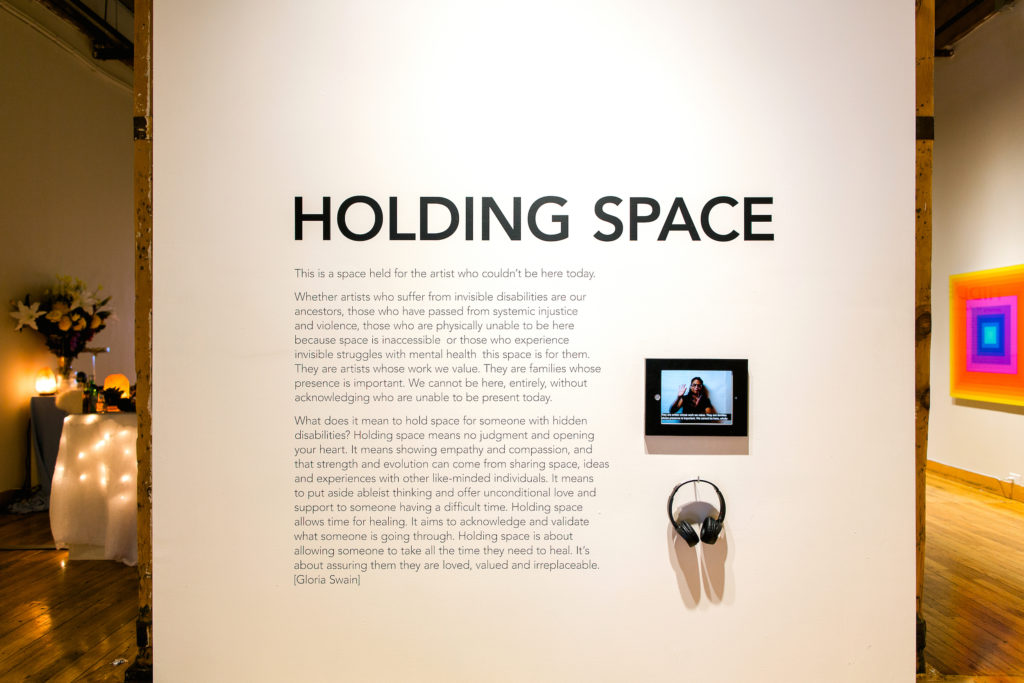
Gloria Swain, Holding Space. Text. Photo: Michelle Peek Photography. Courtesy Bodies in Translation: Activist Art, Technology & Access to Life, Re•Vision: The Centre for Art & Social Justice at the University of Guelph.

Gloria Swain, Self-Portrait: Anxiety/Depression, This Is My Story: Lost Narrative, Chronic: Limitations, It’s Complicated: Mental Disabilities (detail). Various mediums. Photo: Michelle Peek Photography. Courtesy Bodies in Translation: Activist Art, Technology & Access to Life, Re•Vision: The Centre for Art & Social Justice at the University of Guelph.

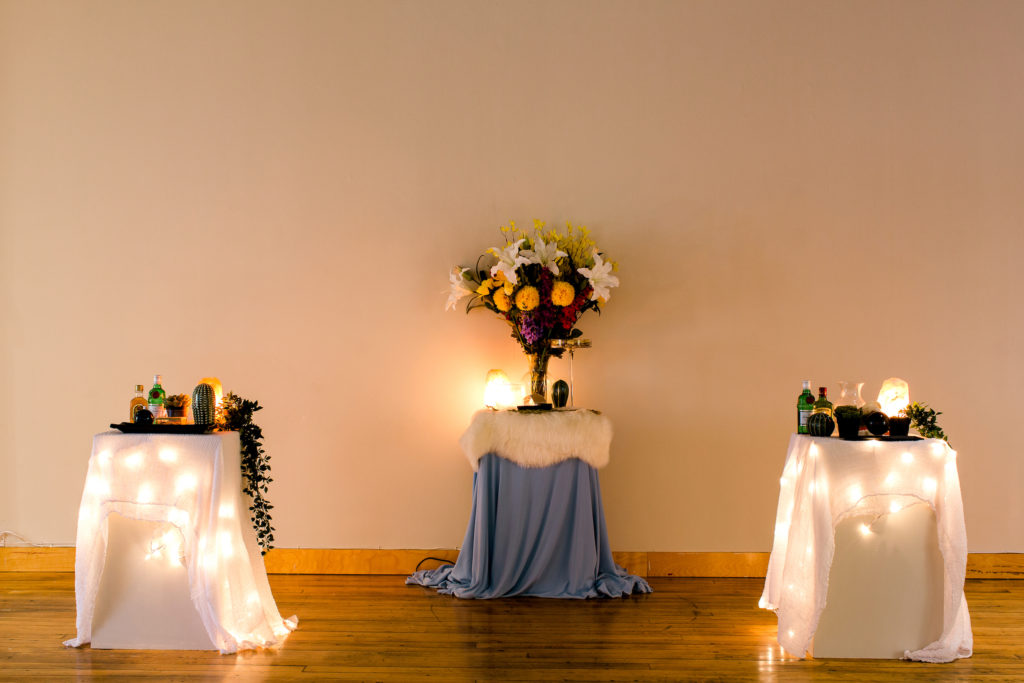 Kyisha Williams, An Altar For Our Ancestors, 2020. Immersive Installation. Photo: Michelle Peek
Photography. Courtesy Bodies in Translation: Activist Art, Technology & Access to Life, Re•Vision: The Centre for Art & Social Justice at the University of Guelph.
Kyisha Williams, An Altar For Our Ancestors, 2020. Immersive Installation. Photo: Michelle Peek
Photography. Courtesy Bodies in Translation: Activist Art, Technology & Access to Life, Re•Vision: The Centre for Art & Social Justice at the University of Guelph.
